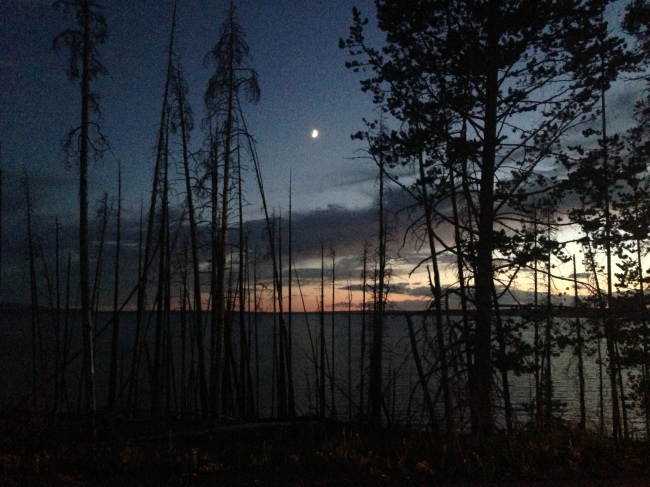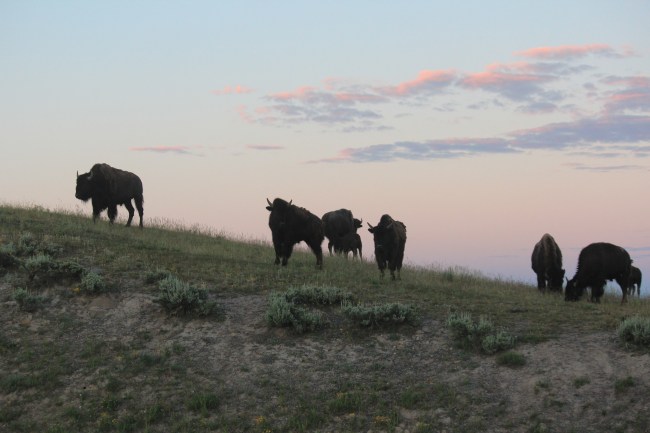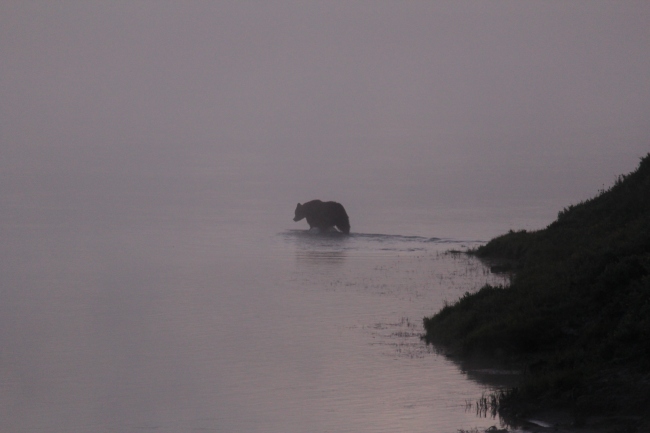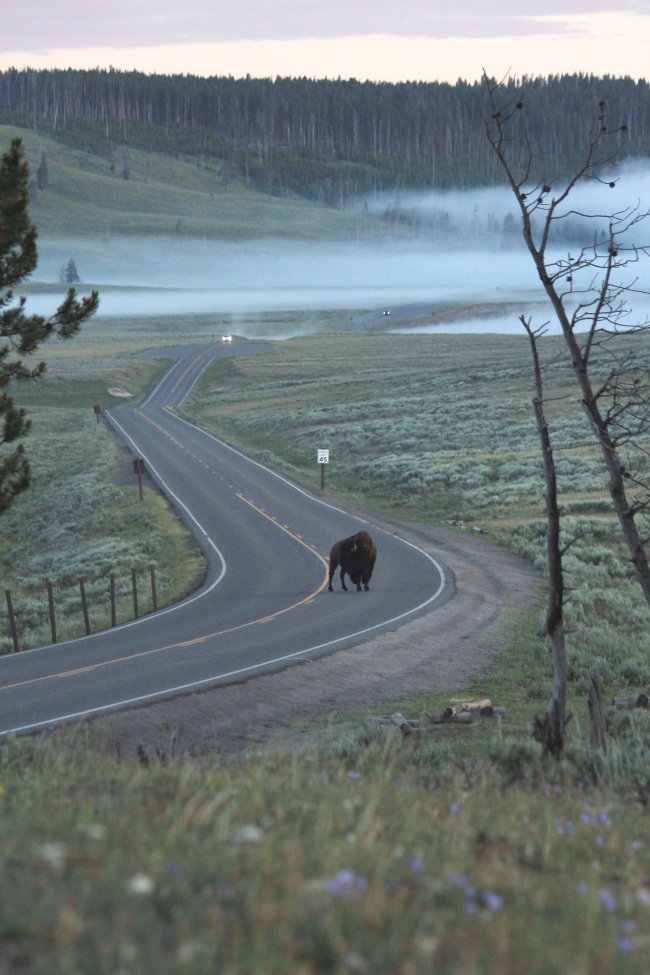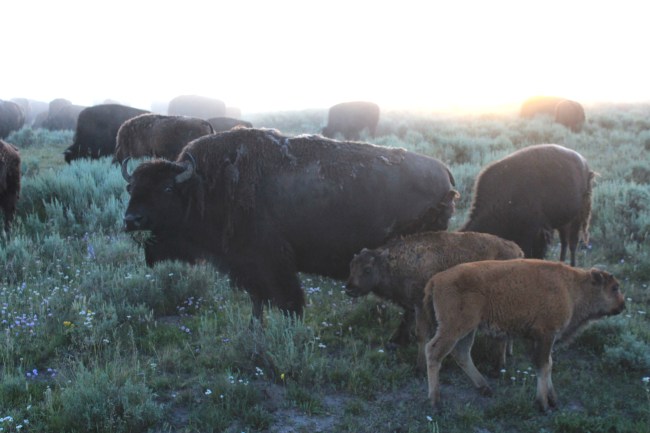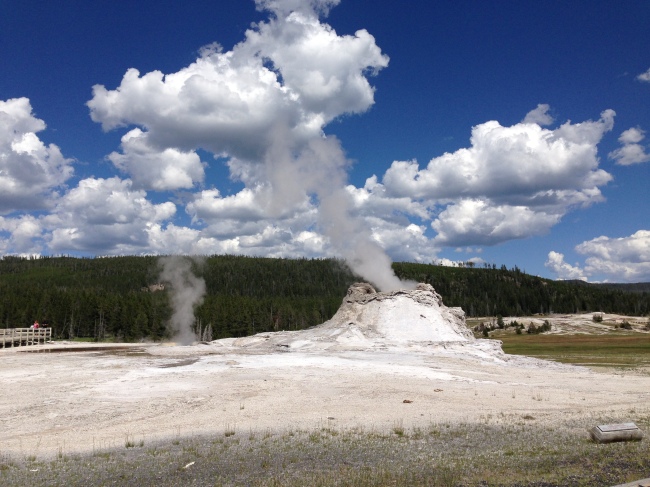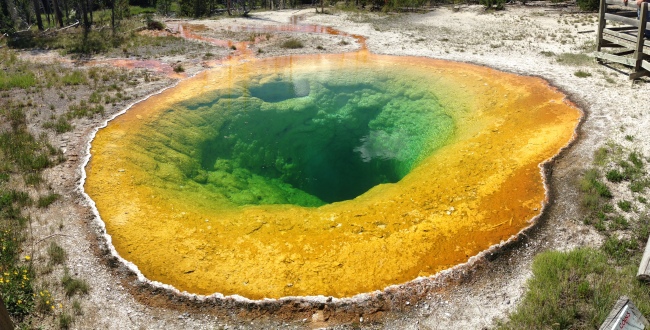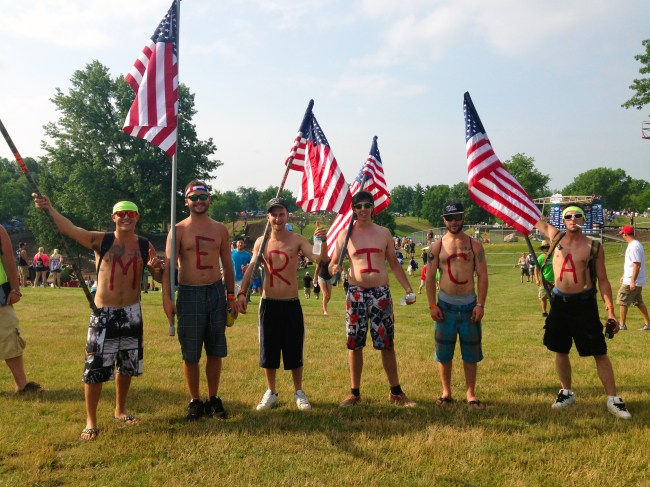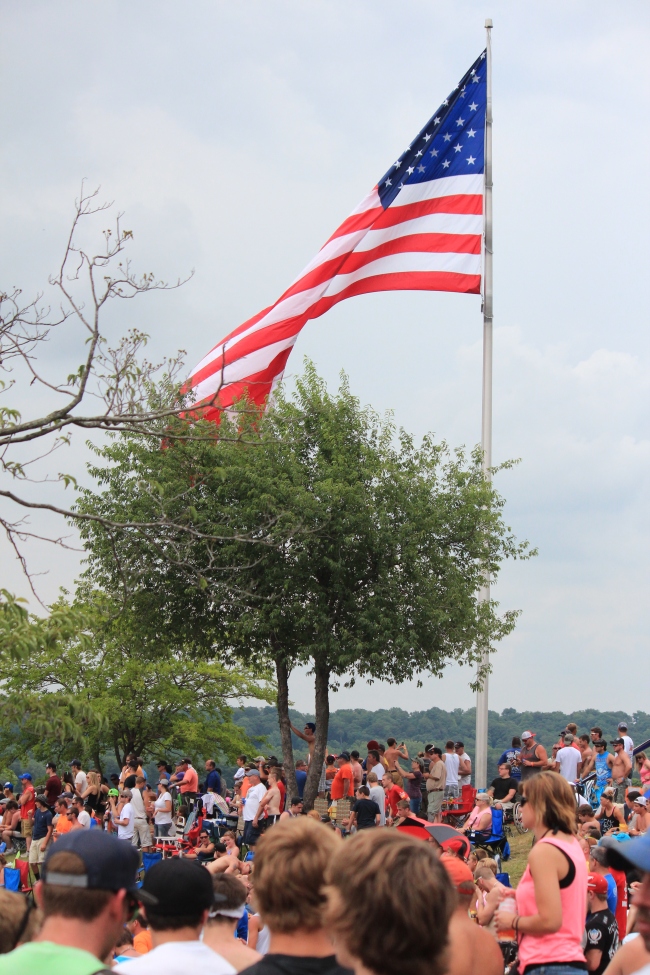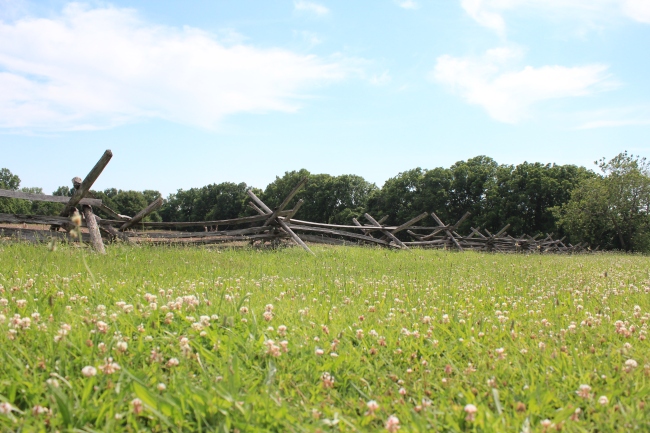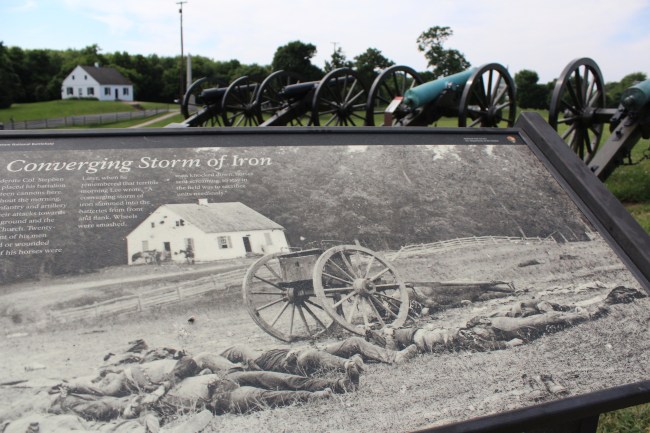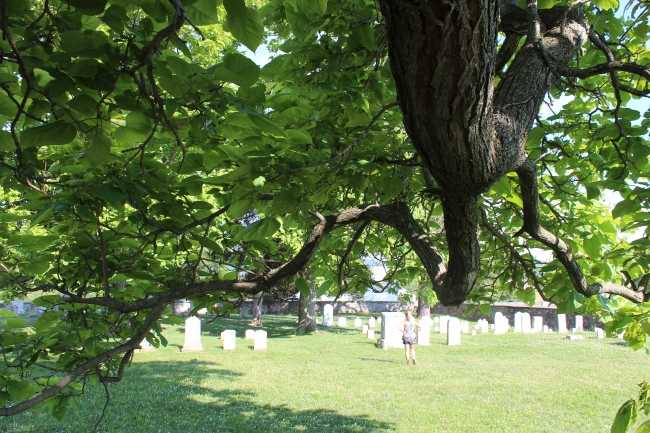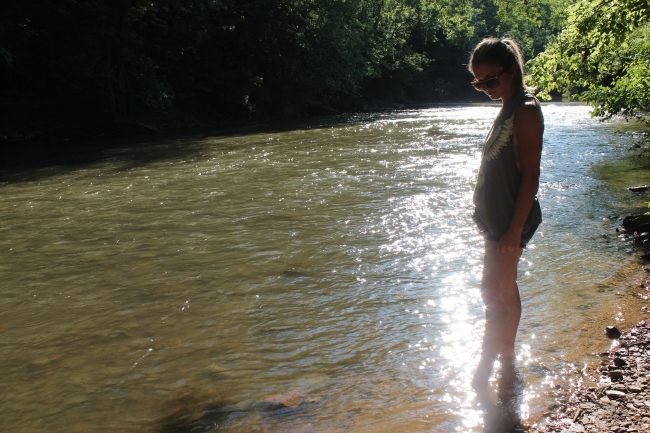We arose in the dark and idled out of the sleepy campground. Our breath rose like smoke as we yawned in the crisp morning.
Creeping along through Hayden Valley, we looked beyond our headlights at the grasslands that were barely emerging in the silver morning. Geothermal steam rose from the lake and eddied above the surface, so that the lake looked as warm and inviting as a bath to weary bones.
When we spotted the tiny shapes of buffalo across the horizon line, we pulled the car over. Soon the entire hillside was populated with them. We were so enamored with the buffalo herd, that we almost missed the hulking figure that darted across the road behind us—a quick, dark flash in the rear view mirror.
We seized with excitement, throwing the vehicle into a U-turn in time to see the massive Grizzly bear bounding away from the road and toward the lake. In bone, muscle, and mass he looked the part of a King in this wilderness. His speed was astounding. With each giant stride his shoulder bones rippled beneath his fur. In moments he was at the water’s edge and almost out of sight around the bend.
There, he paused, sniffing the air, calculating his options. He stepped gingerly into the water and then, as graceful as a ballerina, he pushed off into the lake with barely a splash. He glided through the placid water and each time he surfaced, his head grew tinier with distance. Then, he was out of sight.
Far from the hustle of traveling, from the roar of machines and the cheering of fans, we witnessed in these silent moments the earth in motion, life impervious to our presence.
When Carl Sagan perceived the earth—a “pale blue dot,” in a grand solar system—he observed that we are merely “a mote of dust suspended in a sunbeam.” In all the solar systems, within all the galaxies, within a vast, vast universe, we are insignificant. And yet, it is plain to see, our planet Earth is truly remarkable.

